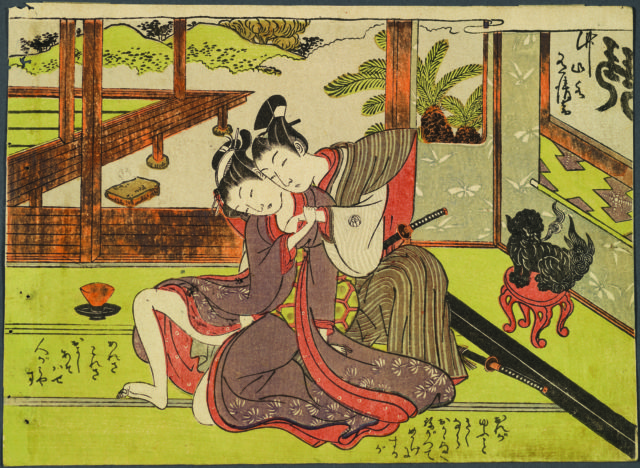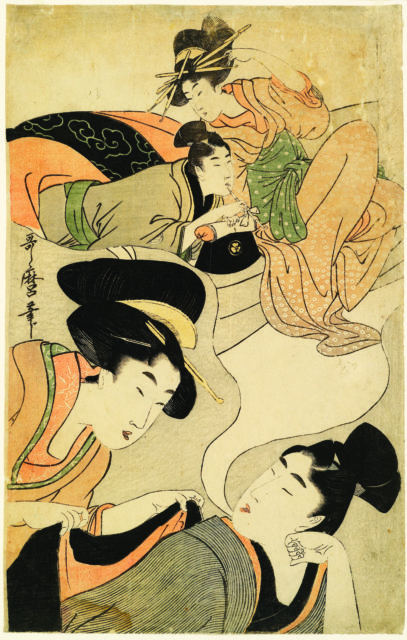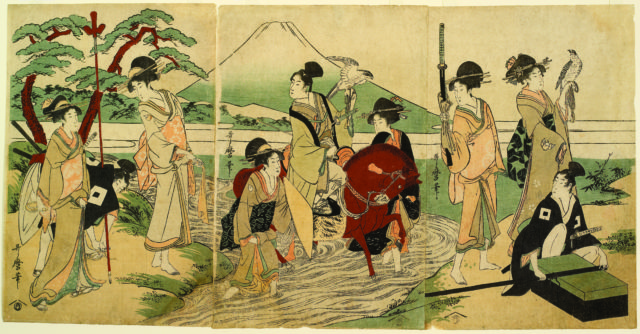
Gender ambiguity is not a new-age expression. In fact, non-binary genders have historically been seen as higher beings who transcend gender altogether. Historians have seen this in many different cultures from Kathoey in Thailand, Bakla in the Philippines, Two-Spirit in North America or “sistergirls/brotherboys” in Aboriginal Australian, to name just a few. Included in this diverse array of gender expressions are the wakashu of Edo Japan, specifically in a period from 1603-1868.
Isoda Koryūsai’s print above is one of over 70 objects included in a brand new exhibit titled “A Third Gender: Beautiful Youths in Japanese Prints” shown at the Japan Society on East 47th Street in New York. This is the first exhibit in North America to display how Japanese culture has disrupted gender conventions. Curator Asato Ikeda makes the argument with this exhibit that the wakashu were actually a third gender during this era, seen as neither man or woman.
Wakashu are described as “male adolescents (ages approximately 15-21) who were seen as objects of sexual desire for both adult men and women.” They are frequently mistaken for women as they are depicted with feminine features and dressed in traditionally female clothing. The one discerning trait being a small shaved part of their hair at the crown of their head.

Though students learn about the Edo period in Japan’s history, the wakashu are rarely discussed. This disruption of the gender binary went beyond just wakashu; once wakashu became adult men, they were traditionally supposed to assume the role of a man in society. However, some continued to dress like women in the pleasure and Kabuki Theater districts.
The contemporary relevance of this show is paramount. While many Western cultures around the world do not recognize transgender identities (especially non-binary expressions of gender), many pre-colonized cultures recognized third (and fourth and fifth and even sixth) genders.

The exhibit offers the perspective that gender and sexuality were much more fluid during Edo Japan. Depictions of homo-erotic fantasy were not seen as different or other; they were merely a part of life that many (men and women alike) experienced.
“The Third Gender” is on display now at the Japan Society in NYC through June 11.

What Do You Think?